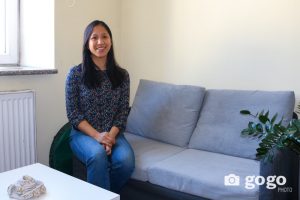136 Mongolia From the Outside, Presented to the Inside
How B. Nyamdari Shares International Experiences with Mongolia While Making Room for Her Own Voice
Among the field of international reporting, much discourse exists criticizing the tendency for international voices to speak over local voices when reporting on conditions in different countries. On Mongolia news site Mongolia Gogo, journalist B. Nyamdari’s article “My Hanh Nguyen: With the Wide Steppes in Mongolia, This Country is Made for Horse Riding” exemplifies a method of reporting which provides an opportunity for both local and international voices to coexist.

The article contains an interview between the author and Mrs. My Hanh Nguyen, a woman born and raised in Vietnam who gained citizenship in the Czech Republic and works there as the Programme Advisor of People in Need International Non-Governmental Organization. The article is a part of a journalistic series titled “Mongolia Through the Eyes of Outsiders,” a series which includes locally-created pieces that highlight international perspectives on Mongolia. This aspect of local creation allows for a sharing of international perspectives on Mongolia which doesn’t attribute dominance to those perspectives but instead creates a balanced fusion of domestic and international voices.
In the interview, Nyamdari asks Mrs. Nguyen, who at the time of reporting had already been staying in Mongolia for a year, about her perspectives on Mongolia and her experiences in the nation. Mrs. Nguyen discusses how she was “amazed how vast and sparsely populated the country is,” how she thinks that “Mongolia is . . . great for outdoor activities, because you get to do more things in your time and space,” and how she has found that “Mongolian food is also great to get you through the winter [and] a few buuz and milk tea is the nicest thing to have after a long day.” She talks about horseback riding in Mongolia, saying that unlike in the UK, in Mongolia she could “go wherever, and however fast [she] wanted to” without worrying about limited space, regulations, or paperwork. She says that she appreciates the “chance to experience wilderness,” and that the “vastness of the land” is an “environment [she’d] struggle to find in other places . . . it’s incredible.” Nyamdari provides insight, as well, reminding Mrs. Nguyen of the names of traditions she participated in and corroborating her experiences.
Nyamdari also asks Mrs. Nguyen about problems she sees in Mongolia. Mrs. Nguyen comments on air pollution, traffic congestion, and gender inequality, but when asked “what services and cultures in [her] country” she would want to implement in Mongolia, Mrs. Nguyen says that she “wouldn’t like to necessarily bring in culture from anywhere else” because “it always depends on the local context.” This allows readers to notice differences between cultures without accepting cultural prescriptivism as the default response to such differences.
Much of the article is anecdotal, as it is an interview about Mrs. Nguyen’s personal experiences in Mongolia. However, Mrs. Nguyen’s statements are verifiable: her comments on traffic congestion and air pollution are corroborated by external reports on road conditions and air quality, and her remark about the “reverse gender gap” under which “girls . . . are mostly sent to universities for higher education, which creates a significant disbalance between the number of educated men and women” is supported by facts and statistics found in Mongolian news organization News.mn’s recent article titled “Gender Imbalance in Mongolian Herding Households.”
Nyamdari’s article highlights non-local perspectives on local conditions in a unique way. The piece includes an international, partially-western-informed perspective on Mongolia, but because the interview is led by a Mongolian journalist, it caters more towards local curiosity on international perceptions of Mongolia and less towards the western gaze. Nyamdari demonstrates how media production can make space for both local and international viewpoints to connect and presents a blueprint for the responsible modeling of such spaces, a blueprint which shares non-local voices while positioning indigenous voices as journalistic authorities.
Image Source:
Nyamdari, B. (2023, February 13). My Hanh Nguyen: With the wide steppes in Mongolia, this country is made for horse riding. Gogo Mongolia. Retrieved February 18, 2023, from https://mongolia.gogo.mn/r/olk42